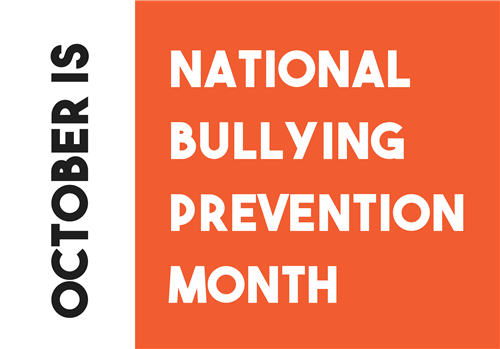by Jade Sizemore, Outreach & Program Coordinator, Community Matters
Bullying can take many forms, from physical aggression and intimidation to more subtle behaviors that might not be apparent to an onlooker. In honor of National Bullying Prevention Month, we would like to draw attention to all types of bullying, especially those that are less obvious yet pervasive. Seemingly subtle put-downs, teasing, and acts of exclusion, are all forms of mistreatment that can lead a child to feel insecure and unsafe.
With teachers and administrators already facing unmanageable workloads, we must begin to view students as capable contributors to a culture of change. Student bystanders see, hear, and know things adults don’t, can intervene in ways adults can’t, and are often on the scene of an incident before an adult. They are the first “boots on the ground”, and are a critical resource for positively impacting the crisis of bullying in our schools.
Given our experience with providing support, training and consultation to more than 2,000 schools, we know the “inside-out” approach is key to successfully shifting this social paradigm. This relationship-based approach is built on a foundation of restorative practices and utilizes students as resources for minimizing and preventing acts of bullying and violence. It emphasizes the power of student voice and the importance of youth and adult relationships.
Let’s do more than instruct our youth. Let’s empower them.
Using a peer-to-peer approach that empowers student voice is the quickest, most effective, and most cost-efficient way to change social norms on campus. By training the socially influential leaders of each clique on campus to be examples of courage and compassion, the social acceptability of bullying can be eradicated. This is the model employed by our Safe School Ambassadors® Program (SSA).
Evidenced-based research has proven that implementing SSA is a long-term, sustainable solution. For any school climate improvement program to be impactful, daily attention must be given to even the most subtle discrimination, intimidation, exclusion, and microaggressions. Here are some things to start paying attention to today:
• Ingenuine or passive-aggressive compliments
• Students being called by new nicknames- possibly an insult or type of taunting
• Gossip- both on and off-campus, including stories related to social media
• Exclusion or withdrawal
• Unexplained absences or complaints of feeling unwell
Bullying is not an inevitable act of youth. It is a conditioned behavior that can continue into adulthood. But there is a solution. Intervention must be swift, and discipline needs to be focused on restoration rather than punishment. Community Matters offers programs and services that help to create educational environments where learning potential is maximized, discipline incidents are reduced, and children can become caring, responsible citizens.
This work we do is vital, and we look forward to continuing collaborative partnerships with those who also believe that compassion and empathy are the key to our future. We extend our appreciation to all the organizations around the country that help to shine a spotlight on this urgent epidemic. And finally, we are ever-grateful for the thousands of students who day-in and day-out express their courage and speak up when they encounter meanness, intolerance and injustice. Together we are making a difference.
